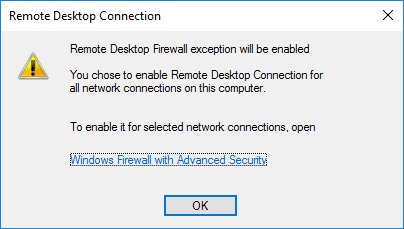

- #Server 2016 remote desktop authorize remote login how to#
- #Server 2016 remote desktop authorize remote login password#
- #Server 2016 remote desktop authorize remote login Pc#
When you look at the Permissions on the RDP-TCP Listener, you will see the below groups as shown below. These permissions can be verified from RDP-TCP Listener properties. If the user has permissions on the listener then the connection is successful. Once the user is authorized for remote logon his privileges to connect to the RDP-Listener is verified.

The reason being that adding a user to this GPO only authorizes him for a Remote Logon to the server but does not give him the permissions to connect to the RDP-Listener. Groups and you go ahead and add him to the GPO for “Allow Logon through Terminal Services”, they will still not be able to create a successful RDP connection to the server. Now, if you have a user account which is not a part of the So, users who are a part of these groups will be authorized to logon remotely to the server. This is underĬomputer Configuration\Windows Settings\Security Settings\Local Policies\User Rights Assignment. The Remote Logon is governed by the “Allow Logon through Terminal Services” group policy. When a user is able to validate the above two conditions successfully, only then is the user provided with a successful RDP connection to the server. These play the vital part in allowing an RDP session to the server.

: privileges for access to the RDP-TCP Listener To start with, there are two types of user rights Logon rights & Privileges. Hence I wanted to provide a short simple explanation about this group policy and the user group and how they are interrelated. And at times, even what to choose between them and what is the best recommended practice. But still there has been some confusion around whether you should be using the GPO for allowing the user to RDP to the server or should be using the Remote desktop users group or both. I am sure many of you are already familiar this GPO and this group. I am Edwin Rocky and this time I am back with some interesting information about the “Allow Logon through Terminal Services” group policy and “Remote Desktop users” group.
#Server 2016 remote desktop authorize remote login how to#
If you don’t know how to do it, you can factory reset your router/modem (but you may need to configure Internet from a scratch).Hello AskPerf readers. Log in to your router settings and disable all port forwarding rules.
#Server 2016 remote desktop authorize remote login Pc#
Scan your PC using Malwarebytes and remove all detected items.Ĥ. Press Win+, click Advanced System Settings, go to Remote tab, disable RDP by selecting “Don’t allow remote connections”, then unset the checkbox “Allow Remote Assistance…” and click OK to save settings.ģ. Turn off Microsoft Remote Desktop (RDP) and Remote Assistance. On top of this, look for ‘Chrome Remote Desktop’ extension in the browser and remove it.Ģ. Look for third-party programs that provide remote access on that PC: TeamViewer, Anydesk, UVNC, Real VNC and uninstall them. In case it turns out that you don’t know exactly how she given remote access, you should better do the following:ġ.
#Server 2016 remote desktop authorize remote login password#
The fact that you changed the PayPal password is good. First of all, we need to understand how exactly she provided access to her PC – via RDP or using some third-party program such as Teamviewer.


 0 kommentar(er)
0 kommentar(er)
